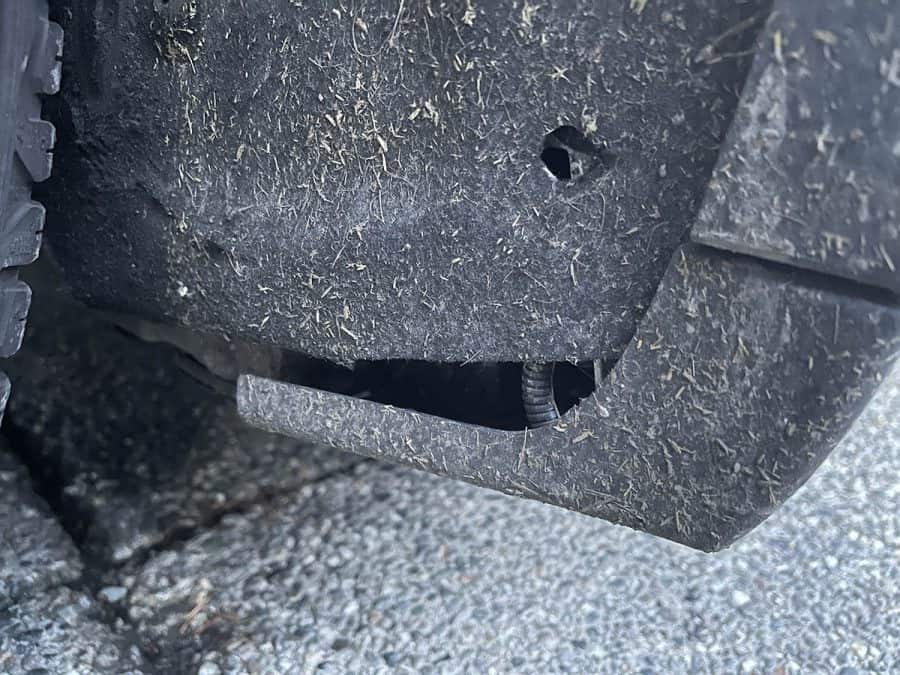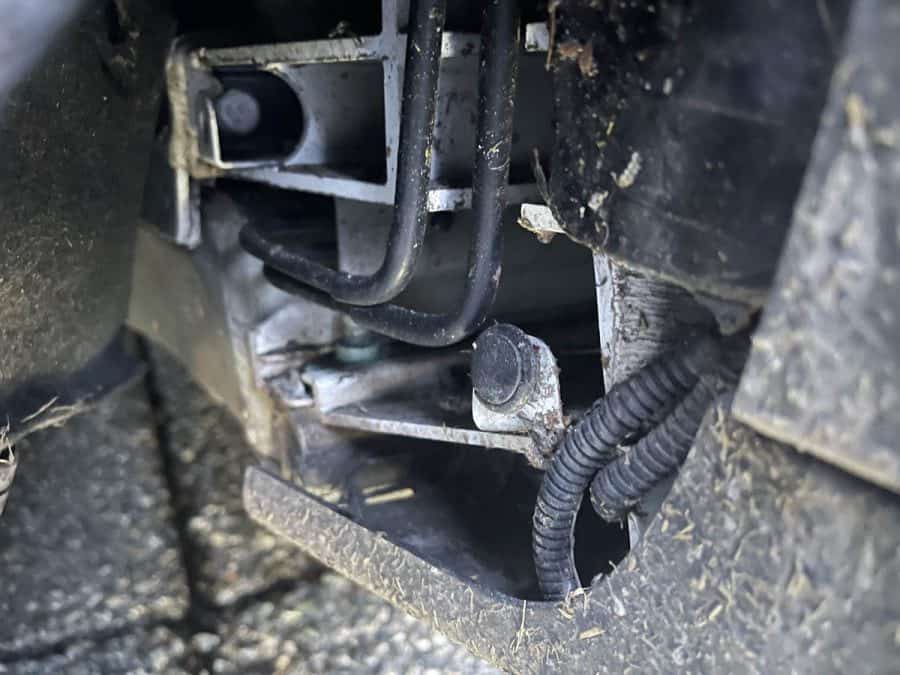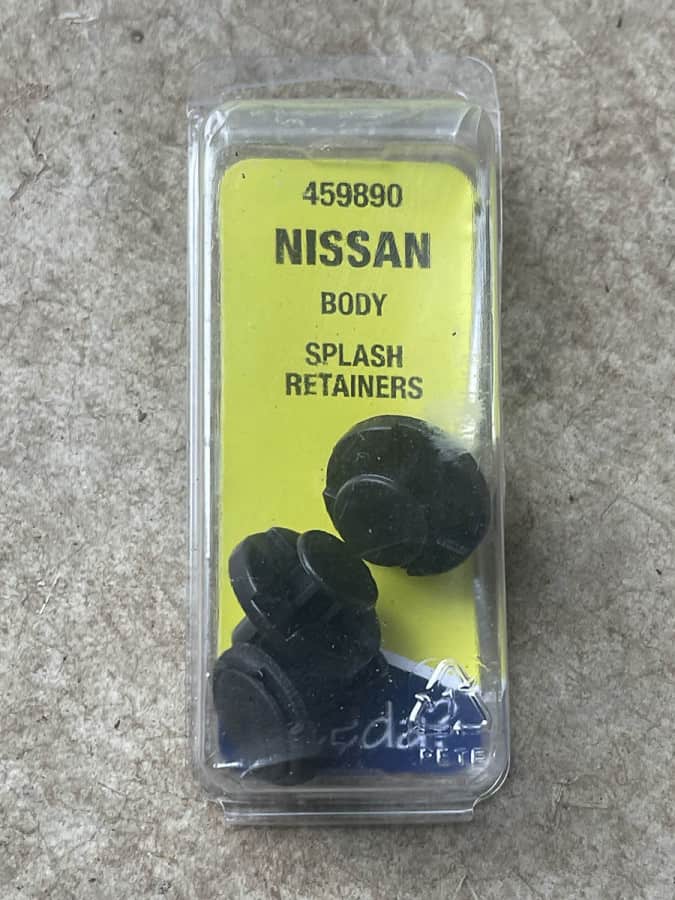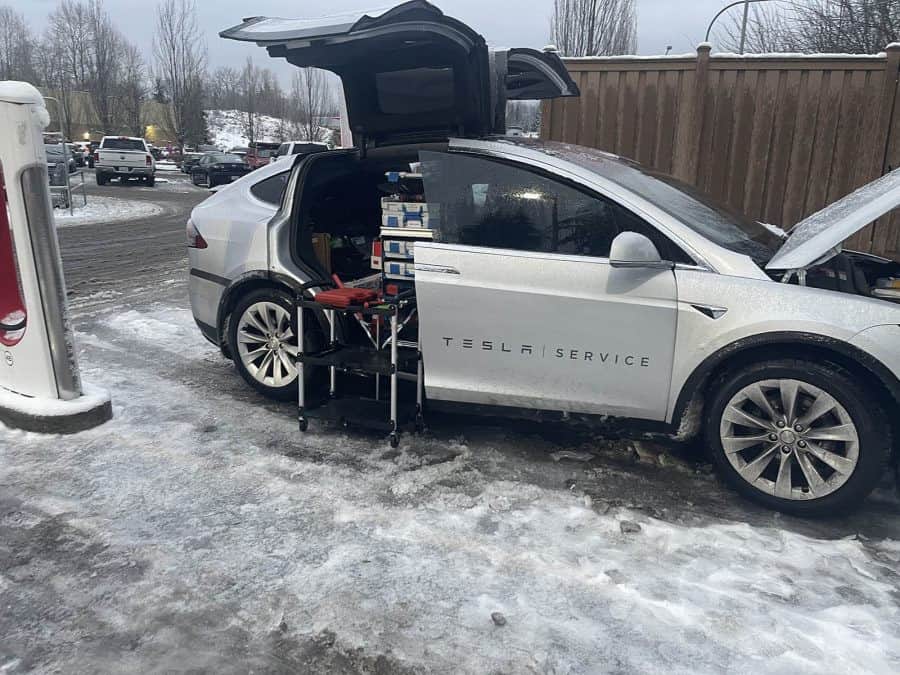We’ve driven in snow and ice conditions in a Tesla for over 4 years, but this was the first time we experienced damage to the wheel well liner. Snow, and ice managed to build up inside of our wheel well and caused enough pressure or force to pull the liner out from the retaining push clips.
Read on to see how you can repair, or even prevent this from happening to your wheel liner.
What Do Wheel Well Liners Do?
Wheel well liners are a crucial part of any automobile, providing protection from dirt, debris, and moisture. They are often made from plastic or rubber and fit snugly against the wheel wells, helping to protect them from the elements. However, snow and ice can cause significant damage to these parts over time. As snow accumulates in the wheel well, it can freeze and expand, cause pressure or force, and lead to cracks and tears in the liner. In addition, moisture from melted snow or ice can seep into the interior of the car, damaging sensitive electrical components.
How it Happened
My wife had been driving our Tesla Model X and mentioned she heard a noise while driving. This was happening primarily after she let off on the accelerator or was turning. At first, I thought it might have had something to do with the regenerative breaking, but after looking inside the wheel well I noticed a section that was bulging downward. Upon a closer look, I saw sections of the wheel liner had pulled loose.

Replacement Wheel Well Liner Retaining Clips
Since the liner pulled out from the original retaining clips, the holes in the liner had been widened and the OEM clips would now longer work. It would require a clip with a wider head. As much as I’ve had several poor experiences, I was off to one of my local automotive stores. At first I tried going to O’Reilly’s, but their inventory was extremely limited and I ended up at Autozone, who has consistently provided me with really bad customer experiences. Despite my dislike for Autozone, I was able to find some clips that ended up working. The diameter of the “pin” section of the clip appeared to be identically as the OEM Tesla clip and the head was wider.

You’ll notice on the picture above, two black air lines for the air suspension and two wire looms for electrical. The Tesla wheel well liner is protecting these components (and others) from road debris. Our liner did have a tear in it, so I’ll need to replace it later.
These are the retaining clips I picked up from Autozone. They’re listed as an OEM replacement for Nissan, but had the same diameter as the Tesla’s, but with a wider head that I needed. Autozone allowed me to open up the package before purchasing to verify fit. To remove the existing retaining clip I used a trim remover tool similar to this one on Amazon.

Eventual Liner Replacement
I actually ran into a mobile Tesla repair technician a couple weeks after this occurred. He had asked if we had any issues with our Tesla and I mentioned the wheel well liner issue. The tech gave me some retaining clips he had and recommended reaching out to him in the spring. I wasn’t interested in having it replaced with a new one right now only to have it get damaged as we’re still in the middle of winter.
The technician gave me his business card and said I could contact him later. I’ll update this post when I get an official quote for how much it will cost to replace the wheel well liner. It will be out-of-pocket since we’re out of warranty. Currently, these wheel well liners are around $200 on eBay which I think is absurd. Hopefully Tesla might actually sell them for less.

Possible Prevention
Fortunately, there are a few steps you can take to prevent excessive damage to your wheel well liners during winter months. First, make sure to regularly inspect your wheel wells for any cracks or tears in the liner. If you find any, be sure to repair them immediately. Second, try to keep snow and ice away from the wheel wells as much as possible. You can do this by brushing off excess snow when clearing your driveway or parking lot, or covering the wheel well with plastic sheeting when parking in snow.
While the steps above may not always be convenient or even feasible, it’s certainly worth at least inspecting any snow or ice build up when you can. I’ve driven in sub-zero weather before, and the snow and ice can quickly build up, and it doesn’t come off easily. In these cases where it’s extremely hard, you may actually cause more damage trying to remove the build up of snow and ice.
I’ve also read where this done happen to several makes and models of vehicles. One post I saw recommended the use of Pam, the spray cooking oil as it’s supposed to prevent snow or ice from building up. I may try this at some point, but similar to tire shine products, I’m sure you’d want to make sure not to get any on the tread of your tires. It would likely cause some traction issues if you have any type of oil on your tire treads. I’ll have to research this one some more and will likely test one side to compare to the other to see how well it works.
Wrap-Up
I’m still not sure what was different about the snow and ice on the roads when my wife drove on this day. We’ve been through much heavier, thicker snow conditions and ice before. Ideally I’ll replace this one and not have to worry about this issue again.
Remember: even small cracks or tears can quickly lead to costly repairs, so it’s important to stay on top of maintenance and repair issues as they arise. Your car will thank you!

